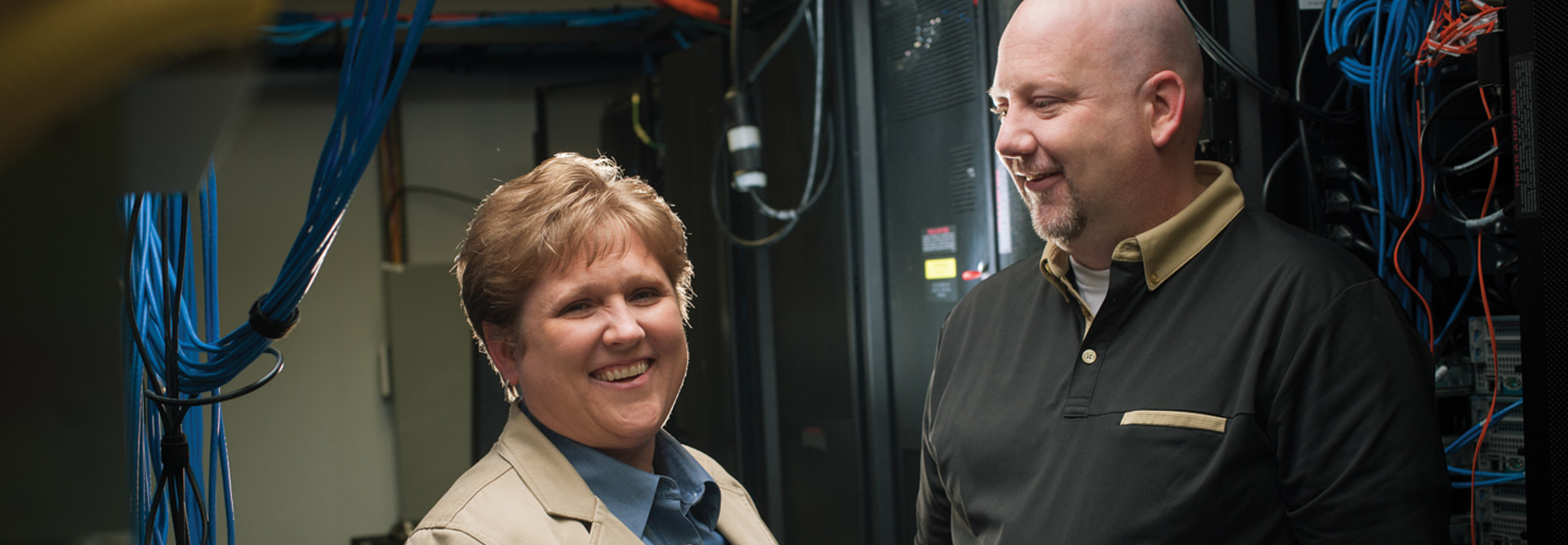Why School Districts Converge Their IT Infrastructure
In early 2013, the Ector County Independent School District was running out of both data storage capacity and data center floor space.
Squeezed two ways, the district's IT department took a whole new approach to its data center architecture by adopting the FlexPod converged infrastructure (CI) solution, says Toby Lefevers, director of information technology for the 37-school district based in Odessa, Texas. FlexPod integrates a NetApp storage area network, Cisco Systems' Unified Computing System blade chassis and networking, and VMware's vSphere hypervisor and software for virtualization and orchestration.
"Our data center was growing, and the time for implementing individual pizza-box servers was over," Lefevers explains. "Converged infrastructure lets us use a pool of resources to accomplish what we're trying to do. You have tested resources that are put together in a proven system."
Converged infrastructure solutions offer tightly integrated packages composed of processing, storage and networking components, says Andrew Neff, a research vice president and investment analyst at Gartner. Most CI products also include a software stack, and virtualization is crucial to many of them, including FlexPod.
"Organizations spend lots of time, money and resources getting technologies integrated into a system," Neff says. "Converged infrastructure solutions reduce complexity and speed time of implementation — both when they're installed and later, as the data center evolves to meet new needs."
In addition, CI solutions eliminate integration costs for crucial data center functions, and the integrated framework cuts provisioning time for infrastructure resources added later, Neff continues. If cash-strapped districts have funding for the initial investment, he adds, they can save money in the long term with a converged infrastructure.
That certainly was the case for the Tyler Independent School District, about 100 miles east of Dallas. Three years ago, the district's IT department installed a VCE Vblock CI solution, which combines Cisco UCS processing, EMC tiered storage and VMware, to facilitate a virtual desktop infrastructure deployment. According to Executive Director of Technology John Orbaugh, the VDI implementation will save the 28-school district approximately $3 million over five years.
The centralized infrastructure provided by Vblock also has simplified administration, strengthened security and improved the computing environment for all district users. "This architecture gives us a lot more freedom and flexibility, which allows us to provide much higher levels of service for students and staff," Orbaugh says.
59% The percentage of respondents who say adoption of a converged infrastructure solution is motivated by the need to respond to budget constraints
SOURCE: "Converged Infrastructure: Ready for the Next Phase" (Forrester Research, September 2013)
Flexibility for the Future
Cost was an important consideration when Ector County ISD technology staff began comparing converged infrastructure products. But it was FlexPod's superior flexibility that led them to choose it over another, more expensive CI solution, Lefevers says.
The implementation in late 2013 was trouble-free, thanks in large part to pre-planning and installation help from CDW•G's services team, says Chief Technology Officer Kellie Wilks. "They do an excellent job of knowing what we have, where we're going and how to help us get there," she says.
The FlexPod solution, which provides 90 terabytes of NetApp storage and processing power from two Cisco UCS B-Series chassis — each containing 16 Cisco UCS B200M3 blade servers — is running in parallel with older data center hardware as applications and resources are moved to the new framework.
FlexPod was an especially good fit for Ector County ISD's already highly virtualized data center environment, says Dathan Mullins, the district's network operations manager. "We try to virtualize every new software or server we get and push it to VMware," he explains. "The FlexPod is a massive and robust environment that allows us to continue on that virtualization path. It's important to have these products tested and certified together as a system."
By mid-February, Ector County ISD had 155 virtual machines running in the FlexPod — a number that grows daily, says Senior System Administrator Jason Blackburn, who oversees both storage and VMware solutions in the data center. VMware ESXi 5.1 runs on each blade, and crucial applications — such as Microsoft Exchange, SQL clusters, Active Directory domain controllers, file and web servers, SharePoint 2013 and many more — are installed on VMs in the FlexPod.
FlexPod saves both virtual and physical space in the data center, Blackburn says, and so far, its performance has been flawless. "There hasn't been a single issue," he explains. "There's no downtime, plus it's extremely fast and stable, saves space, and gives us massive amounts of storage. It's a Ferrari to the Pinto we used to have."
Pick and Partner with Care
End users will see the benefits of converged infrastructure (CI) — reduced complexity and savings in time, money and resources — only if they make wise choices when selecting solutions and technology partners, says Gartner Research Vice President and Investment Analyst Andrew Neff. "If you make a mistake, the tight integration means there's more lock-in than if you had taken a best-of-breed approach," he says.
Whether offered by a single company or an alliance of technology manufacturers, each integrated framework is "tuned" differently and will be a better fit for some organizations and purposes than others, he says. Users therefore need to understand their needs before they pick a solution.
The flip side of lock-in, however, is accountability, Neff continues. CI eliminates "finger-pointing" among manufacturers or service providers when there's a problem. "It's very clear who's responsible for fixes," he explains.
Dealing with a responsible partner is crucial to users who turn to CI to mitigate complexity and save time, says Kellie Wilks, chief technology officer for the Ector County Independent School District in Texas. "We don't have time to be the guinea pig. Downtime is not our friend."








